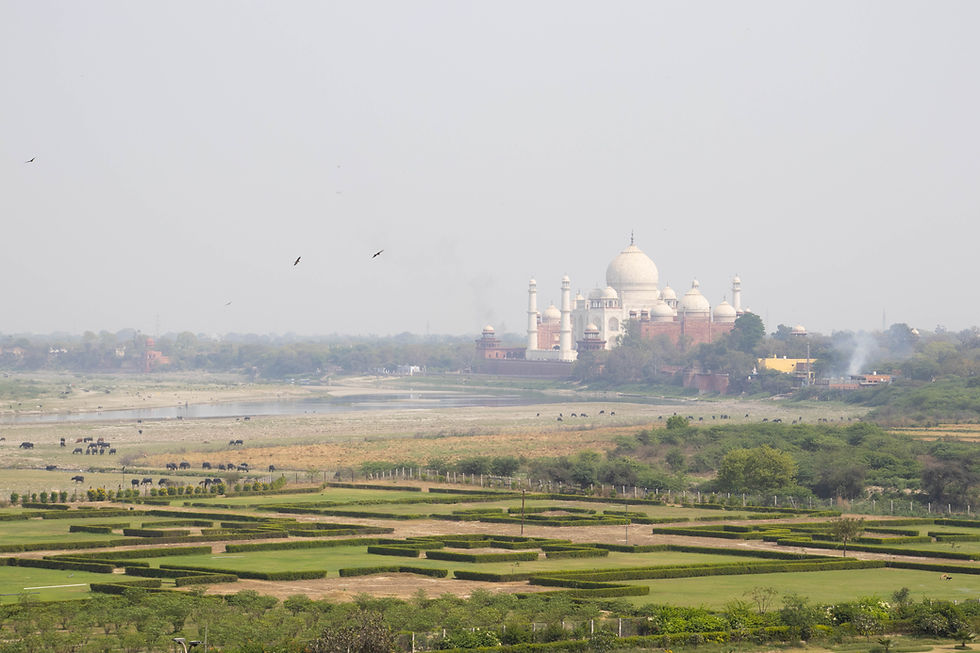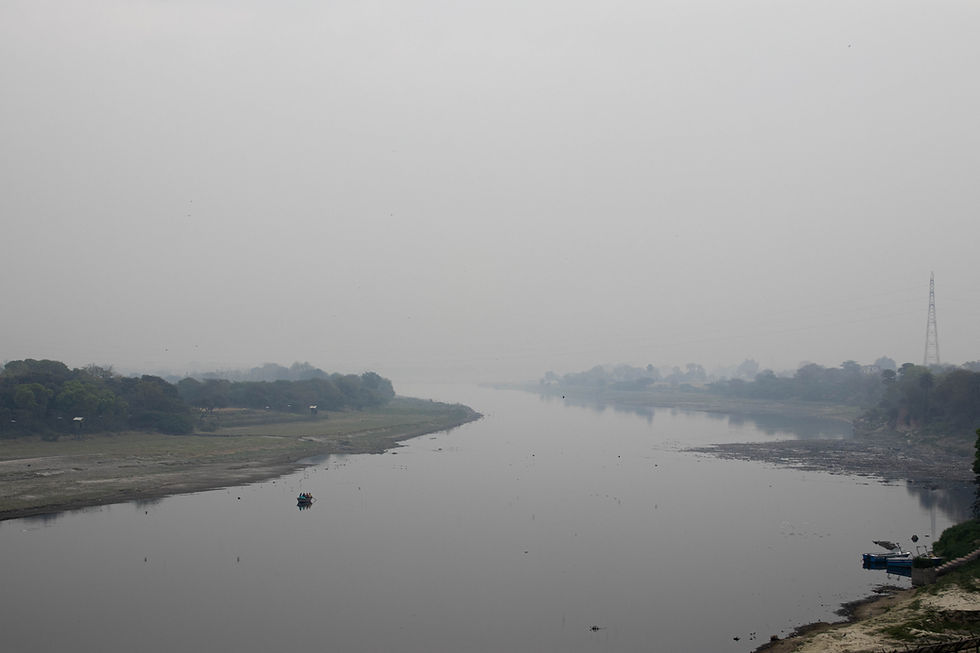The Reality Behind the Taj Mahal in Agra, Uttar Pradesh, India
- Ilse

- Jul 14
- 5 min read
Updated: Aug 14
What years of studying anthropology, philosophy and ethics did not prepare me for

The Taj Mahal needs little introduction. Rising from the banks of the Yamuna River in Agra, Uttar Pradesh, India, it is one of the most famous monuments in the world. The Taj Mahal was commissioned in 1632 by the Mughal emperor Shah Jahan for his wife Mumtaz Mahal and took over two decades and thousands of workers to complete. Today, the Taj Mahal attracts over six million visitors per year and some estimate its cultural and economic value in the billions. Whereas cities like Agra live off tourism revenue from monuments like the Taj Mahal, that wealth rarely benefits the city's poorest.
I visited the Taj Mahal right before I started my anthropological fieldwork in Udaipur, India. It felt surreal to visit a place that I had seen in photos, films, and magazines so often. In real life too, the Taj Mahal is truly breathtaking with its magnificent symmetry and the magical way the white marble changes color as the sun rises.


What no media had prepared me for, however, was the stark contrast between the gleaming white domes of the Taj Mahal and the day-to-day of those living nearby. Many locals work informally as rickshaw drivers, street vendors, or ticket hustlers, often earning barely enough to get by.

From the rooftop of our hostel, we got a peek into the lives of people in Agra: rooftops in construction where children play and young people chat. Seeing humans across the world do the same human things — playing and connecting —regardless of the particular circumstances, is one of my favourite things about travelling.
The streets of Agra, however, were emotionally difficult for me to navigate — especially around the train station where most tourists and travellers arrive. While I have travelled to various countries in the world, and have visited crowded cities like New Delhi, Agra remains one of the places with the most child beggars I have seen thus far.

Getting out of the rickshaw and to the station, we had multiple children hanging onto our bags. Normally, I never give money to child beggars as this can perpetuate exploitation. Child begging is often involuntary, meaning children are forced to beg by adults — sometimes by family, but more often by organized networks that exploit children for profit.
But these children were not asking for money. These children were grabbing onto the small snacks and water bottles we had.'
We were about to go on an overnight train journey. In India, where especially foreigners can barely brush their teeth with tap water, this means you need at least some clean drinking water. But when you see children desperately reach for your last bottle, what do you do? Do you firmly hold onto it while a child is trying to pull it out of your hands?
I have tears in my eyes just thinking back to those moments. No amount of years of studying anthropology, philosophy and ethics prepare you for practical situations like these.
Although my study programs — Cultural Anthropology and Philosophy, Politics and Society — were much more open than the traditional ‘hard’ sciences, the fact is that even the basis of social sciences lies in rationality. This means that conclusions have to be argued for, while emotions cloud results. But when there are little eyes looking up at you, begging for your water bottle, what is rational argumentation worth?
When it comes to ethical dilemmas, emotions are always involved. And they should be — emotions keep us human.
The most heartbreaking for me was that as soon as I looked in the eyes of these children with tears in mine, they registered my emotion as an opportunity and pulled harder saying “please, water, please.” And so when I did not want to give up my last bottle after having given the rest away, I started looking the other direction; I was trying to ignore them.
This is the hardest thing about facing such immense inequality.
For me, looking people in the eyes and greeting each other with a smile is a way of recognizing each other as human beings, regardless of each of our circumstances. It is a principle that I learned years ago from a book on Ubuntu, a humanist philosophy from the South of Africa. Although no translation will encompass the entire philosophy, Ubuntu is often translated as “I am because we are.” It is a philosophy that emphasizes recognizing humanity or personhood in each other as a basis for community and as a basis for life.
But when facing such inequality like on the train station in Agra, I don’t always manage to look the other person in the eyes, even though ignoring people — or trying to — goes against all of my core values. At the same time, being able to look away is an immense privilege.
How do we hold onto human connection in inhumane situations? How should I position myself in a practical situation where I am on the extremely wealthy side of the inequality?
Poverty in India is a complex and deeply rooted issue shaped by history, caste, colonialism, economic policy, and structural inequality. While India has made significant progress in reducing extreme poverty over the past few decades — especially since the liberalisation of its economy in the 1990s — millions still live without secure access to food, healthcare, education, housing, and clean drinking water. At the same time, as a Dutch person, my wealth in comparison to the vast majority of the world is the result of ongoing colonialism — albeit in different forms now.
On a systemic and rational level, I know that the best I can do to help these people is find local NGOs that work to improve the circumstances for and with these communities. We made sure to hire local guides and never spent time in resorts, as their revenues usually do not feed back into the local economy. We stayed in Joey's hostel, where the staff was able to recommend us local and certified guides to visit the Taj Mahal and the many other sightseeing locations in Agra, such as the 'Baby Taj' (see photo below). At the same time, I know that it is also important to educate myself and others on how our actions — such as how and what we purchase — ripple through across the world.
On an individual and emotional, however, I do not know what to do.

Like with cultural anthropological fieldwork, travel provides us with the context to understand that questions of global inequality usually do not have clear answers. But the complexity of the question, the absence of a clear answer, and the discomfort in a situation should never stop us from starting the conversation.
So, to start the conversation: how would you feel in a situation like the one I described above? What do you feel is the right thing to do? And have you experienced similar situations when travelling?
--
Thanks for reading! If you want my stories to reach you again in the future, you can subscribe to my newsletter (max. once a week) or connect with me on instagram (@iam_allovertheplace) to follow my life as a slow travelling storyteller!







Comments